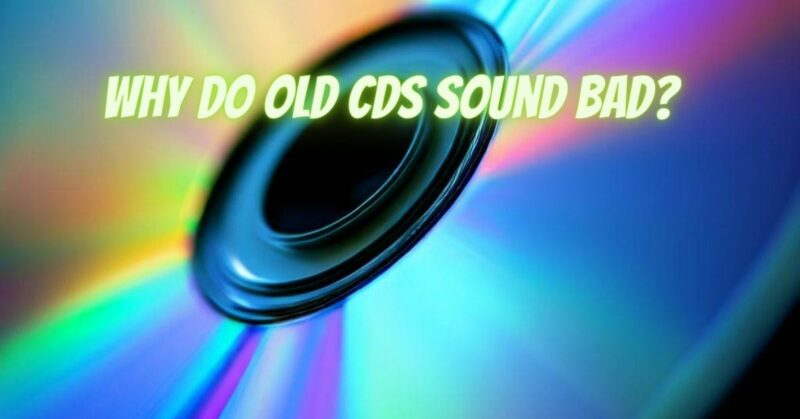As technology has evolved, the compact disc (CD) has remained a reliable medium for storing and playing audio. However, some audiophiles and music enthusiasts have noticed that older CDs can sometimes sound less than stellar. In this article, we will explore the reasons why old CDs may sound bad and how the aging process can affect audio quality.
The Aging of Compact Discs
CDs are known for their durability and resistance to physical wear and tear, which sets them apart from vinyl records and cassette tapes. However, CDs can still undergo a form of degradation over time, leading to changes in audio quality.
Factors Contributing to Deterioration
Several factors contribute to the degradation of old CDs:
- Physical Damage: Scratches, scuffs, and other physical damage to the CD’s surface can affect the laser’s ability to read the data accurately. Even minor surface imperfections can lead to errors in audio playback.
- Chemical Reactions: Over time, chemical reactions can occur within the layers of a CD, affecting the reflective layer and the integrity of the data. This is often referred to as “disc rot.”
- Exposure to Light: Prolonged exposure to direct sunlight can lead to the breakdown of the dye used to record data on the CD, potentially altering the audio.
- Environmental Conditions: High humidity and extreme temperatures can also impact the CD’s protective layers and its ability to reflect and read data correctly.
- Manufacturing Quality: The quality of CD manufacturing can vary. Low-quality CDs may be more susceptible to degradation, whereas high-quality CDs are engineered to resist deterioration.
Effects on Audio Quality
The degradation of CDs can result in several audio quality issues:
- Data Errors: As the CD deteriorates, it may develop data errors, causing audio dropouts, skips, or distortion during playback.
- Loss of Clarity: The reflective layer’s deterioration can lead to a loss of clarity and detail in the audio, resulting in a less enjoyable listening experience.
- Increased Noise: Aged CDs may introduce more noise into the audio signal, reducing overall fidelity.
- Altered Frequency Response: Changes in the CD’s dye or reflective layer can affect the frequency response, leading to shifts in the tonal balance of the audio.
- Inconsistent Playback: Older CDs may not play consistently across different CD players, as some players may have more advanced error correction mechanisms than others.
Preserving and Restoring Old CDs
To mitigate the effects of CD degradation and maintain audio quality, consider the following steps:
- Proper Storage: Store CDs in a cool, dry, and dark environment to reduce exposure to environmental factors that contribute to degradation.
- Handle with Care: Handle CDs by the edges to avoid smudging or introducing scratches. Clean CDs gently using a soft, lint-free cloth.
- Backup Digitally: Create digital backups of your CD collection to preserve the music in a lossless format and reduce the need for frequent playback of the original CDs.
- Check for Errors: Use error-checking software to identify and repair errors on CDs, if possible.
- Professional Restoration: For valuable or cherished CDs, consider professional restoration services that can repair or restore damaged discs.
Old CDs may sound bad due to a combination of factors, including physical damage, chemical reactions, and environmental exposure. While CD degradation is a concern, proper care, storage, and digital backup can help preserve your CD collection and maintain audio quality for years to come. Despite the aging process, many CDs can still provide an enjoyable listening experience when handled and stored correctly.

